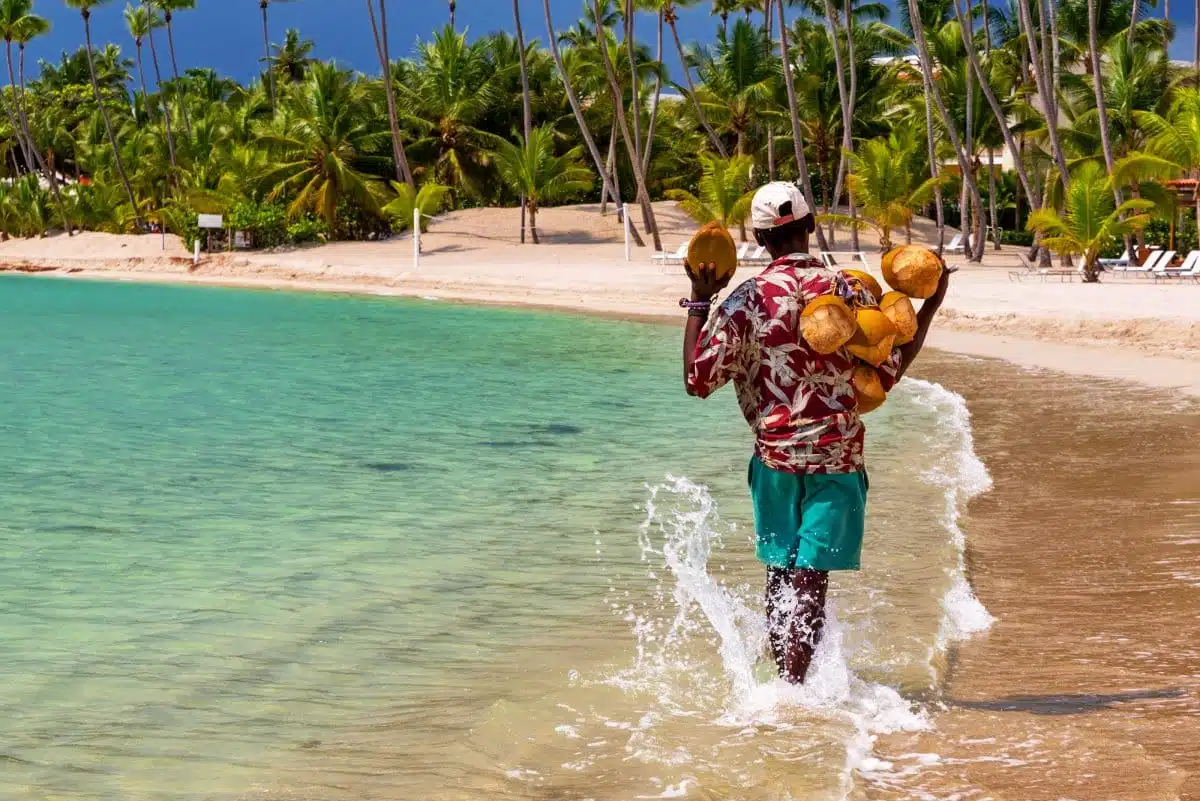The Dominican Republic, in the heart of the Caribbean, offers diverse experiences, from its bustling cities and rich history to stunning beaches and lush landscapes. This guide presents 15 must-visit destinations, each offering a unique slice of the Dominican experience. Discover the vibrant culture, the rhythms of merengue and bachata, the flavors of Dominican cuisine, and the unparalleled natural beauty that this nation has to offer.
1. Santo Domingo’s Zona Colonial
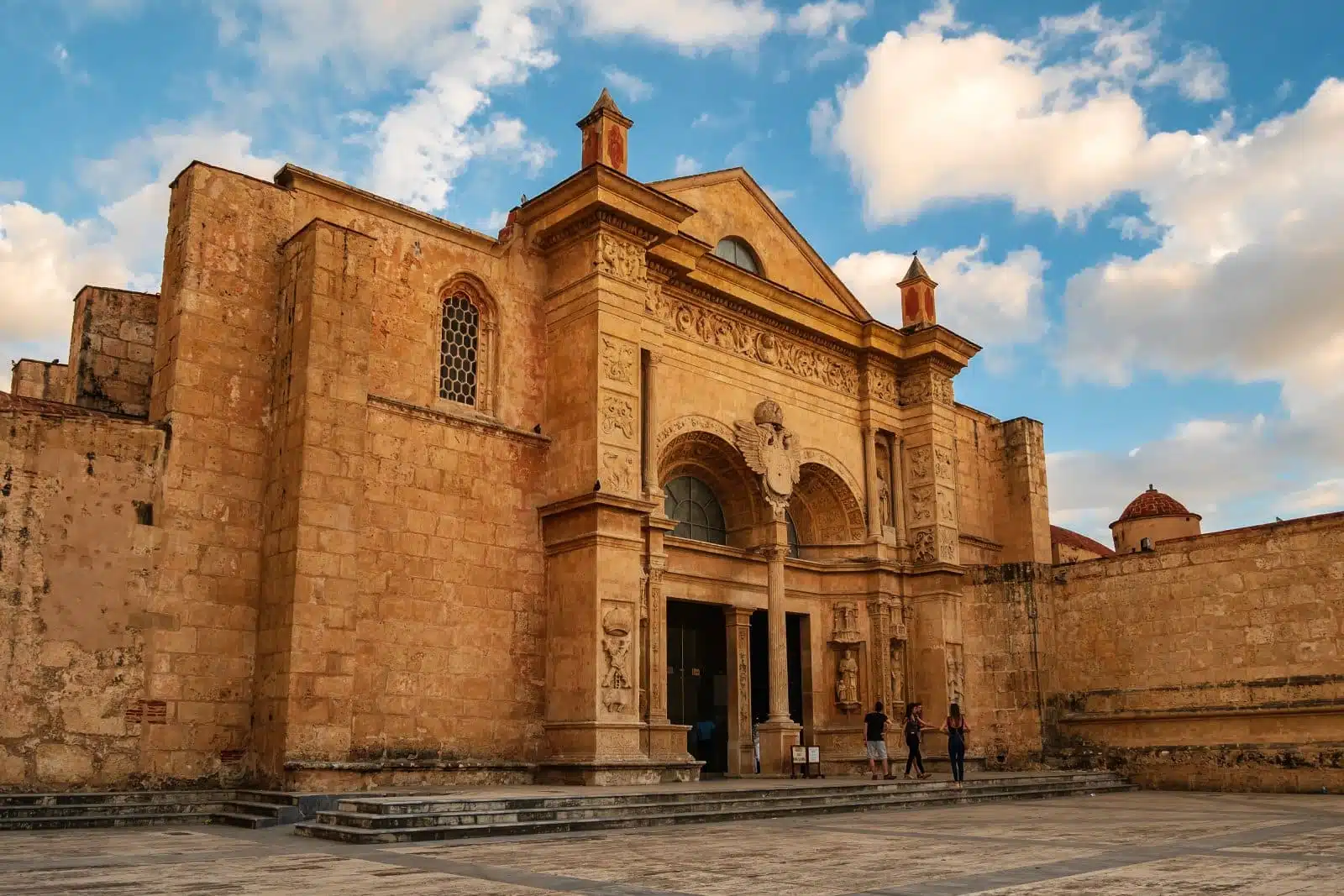
Image Credit: Shutterstock / saaton
Santo Domingo’s Zona Colonial, a UNESCO World Heritage Site, is teeming with historical significance. This district, known as the birthplace of the New World, offers a rich array of architectural wonders and cultural heritage. Stroll along its cobbled streets to encounter landmarks such as the Catedral Primada de America, the oldest cathedral in the Americas, and the Alcázar de Colón, an erstwhile viceregal palace. The area is also a vibrant cultural hub, with art galleries, quaint cafés, and lively markets that exhibit the city’s contemporary spirit amidst its historical backdrop. The Zona Colonial’s blend of past and present creates an immersive experience that encapsulates the essence of the Dominican Republic’s capital.
Insider’s Tip
Visit the Museo de las Casas Reales to delve into colonial history.
When to Travel
November to March for cooler temperatures.
How to Get There
Fly into Las Américas International Airport and take a taxi or bus to Zona Colonial.
2. Punta Cana’s Beaches
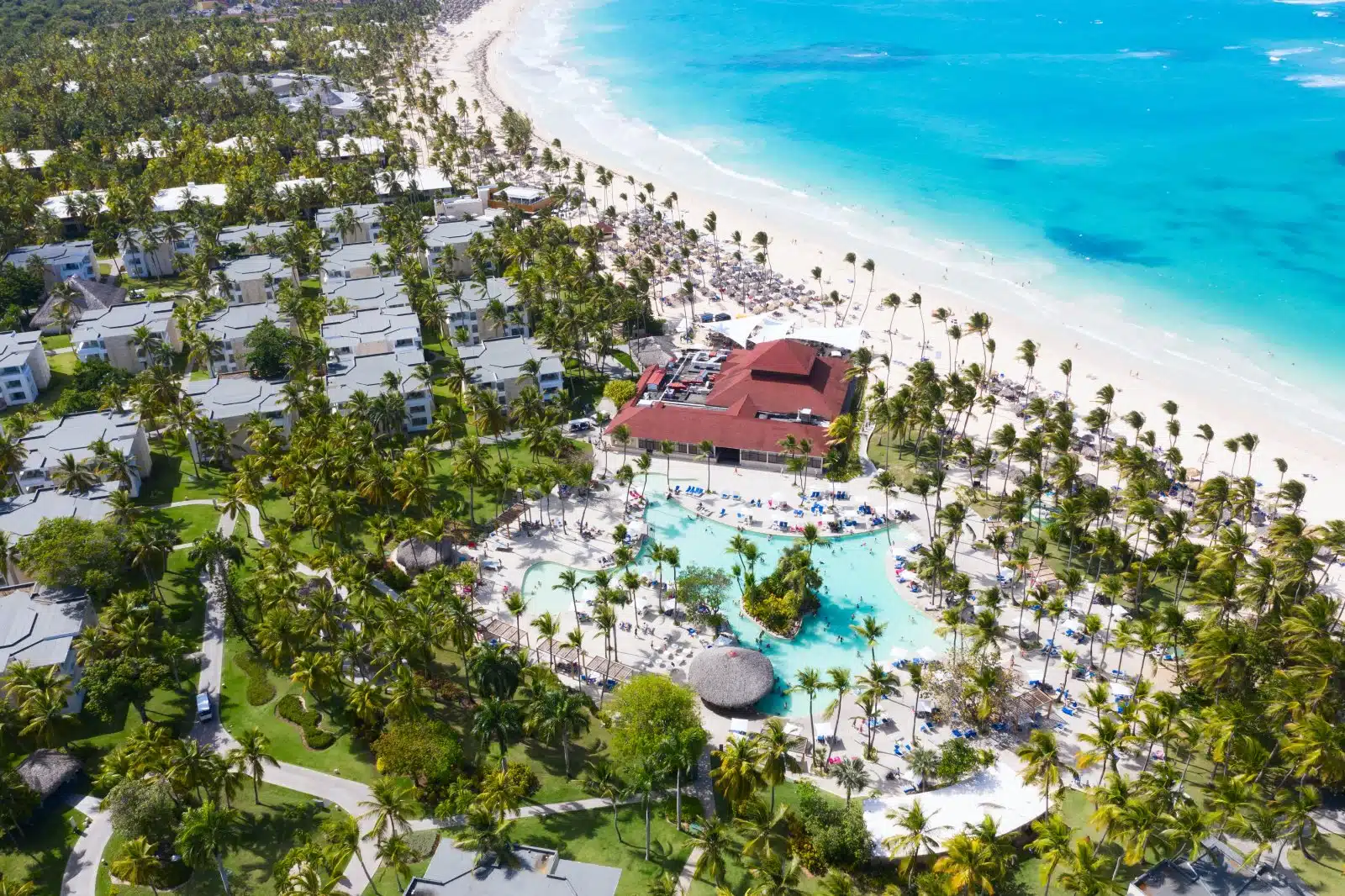
Image Credit: Shutterstock / Fedor Selivanov
Punta Cana, is a paradise for beach lovers and sun seekers. This renowned destination is home to some of the most idyllic beaches in the world, such as Bávaro Beach, known for its pristine white sands and crystal-clear waters. Beyond its picturesque beaches, Punta Cana is also a haven for luxury travelers, boasting world-class resorts, championship golf courses, and an array of water sports opportunities. For those seeking a blend of relaxation and adventure, this destination offers the perfect mix, from serene beach lounging to exhilarating water activities like snorkeling and kite surfing. Punta Cana’s vibrant nightlife and gourmet dining scene add to its appeal, making it an ideal destination for those seeking a comprehensive Caribbean experience.
Insider’s Tip
Explore the nearby Indigenous Eyes Ecological Park for a nature escape.
When to Travel
December to February for the best beach weather.
How to Get There
Punta Cana International Airport is the main gateway, with many resorts offering shuttle services.
3. Jarabacoa’s Mountains

Image Credit: Shutterstock / Don Mammoser
In the heart of the Dominican Alps, Jarabacoa presents a refreshing contrast to the coastal regions of the Dominican Republic. This mountainous retreat, often called the country’s ecological heart, beckons nature enthusiasts and adventure seekers alike. Jarabacoa offers many outdoor activities set against a backdrop of stunning natural scenery. Explore the lush landscapes through hiking, mountain biking, or horseback riding, and experience the thrill of white-water rafting on the Yaque del Norte River. The region’s natural beauty is epitomized by its majestic waterfalls, such as Salto de Jimenoa and Salto Baiguate, which offer breathtaking vistas and opportunities for exploration. Jarabacoa’s cooler climate and tranquil environment make it a perfect destination for those seeking a serene getaway amidst nature.
Insider’s Tip
Try canyoning in the Jimenoa River for an adrenaline rush.
When to Travel
June to September for lush greenery and cooler temperatures.
How to Get There
Fly to Cibao International Airport in Santiago, then drive or take a bus to Jarabacoa.
4. Samana Bay’s Whale Watching
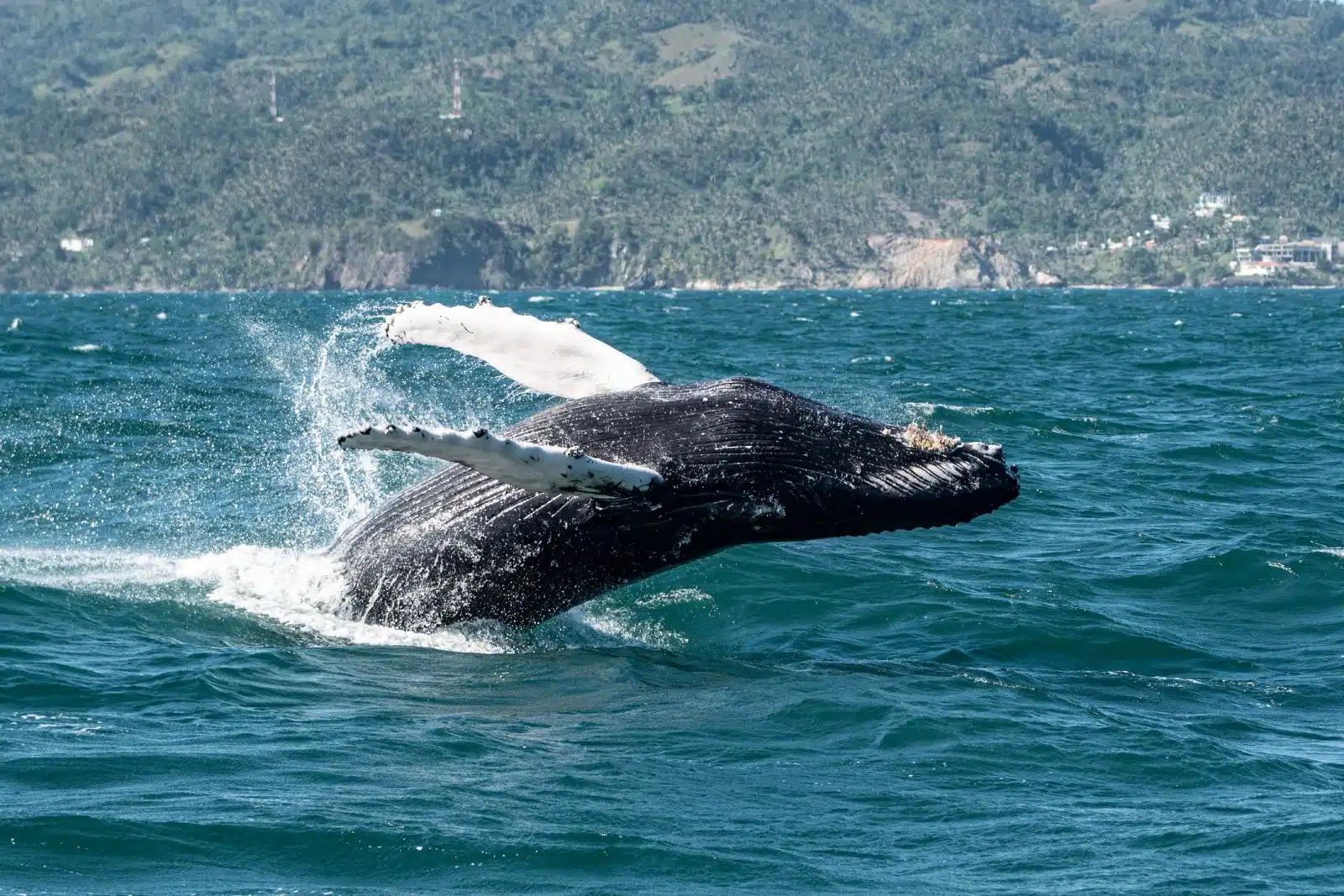
Image Credit: Shutterstock / JOSE ANTONIO CURTO
Experience the awe-inspiring spectacle of humpback whale watching in Samana Bay, a globally recognized destination for marine wildlife observation. Each year, from January to March, the bay becomes a stage for these majestic creatures as they migrate to its warm waters for mating and birthing. Embarking on a guided boat tour offers the chance to witness these gentle giants in their natural habitat. This experience is both humbling and exhilarating. The bay’s Whale Museum complements this experience by providing valuable insights into the lives and behaviors of humpback whales, enhancing your understanding and appreciation of these magnificent marine mammals. Samana Bay’s unspoiled natural beauty and status as a whale-watching haven make it a must-visit destination for wildlife enthusiasts and nature lovers.
Insider’s Tip
Visit the Whale Museum in Samana for insights into these marine giants.
When to Travel
January to March for whale watching season.
How to Get There
El Catey International Airport is the closest, with a short drive to Samana.
5. La Romana’s Altos de Chavón
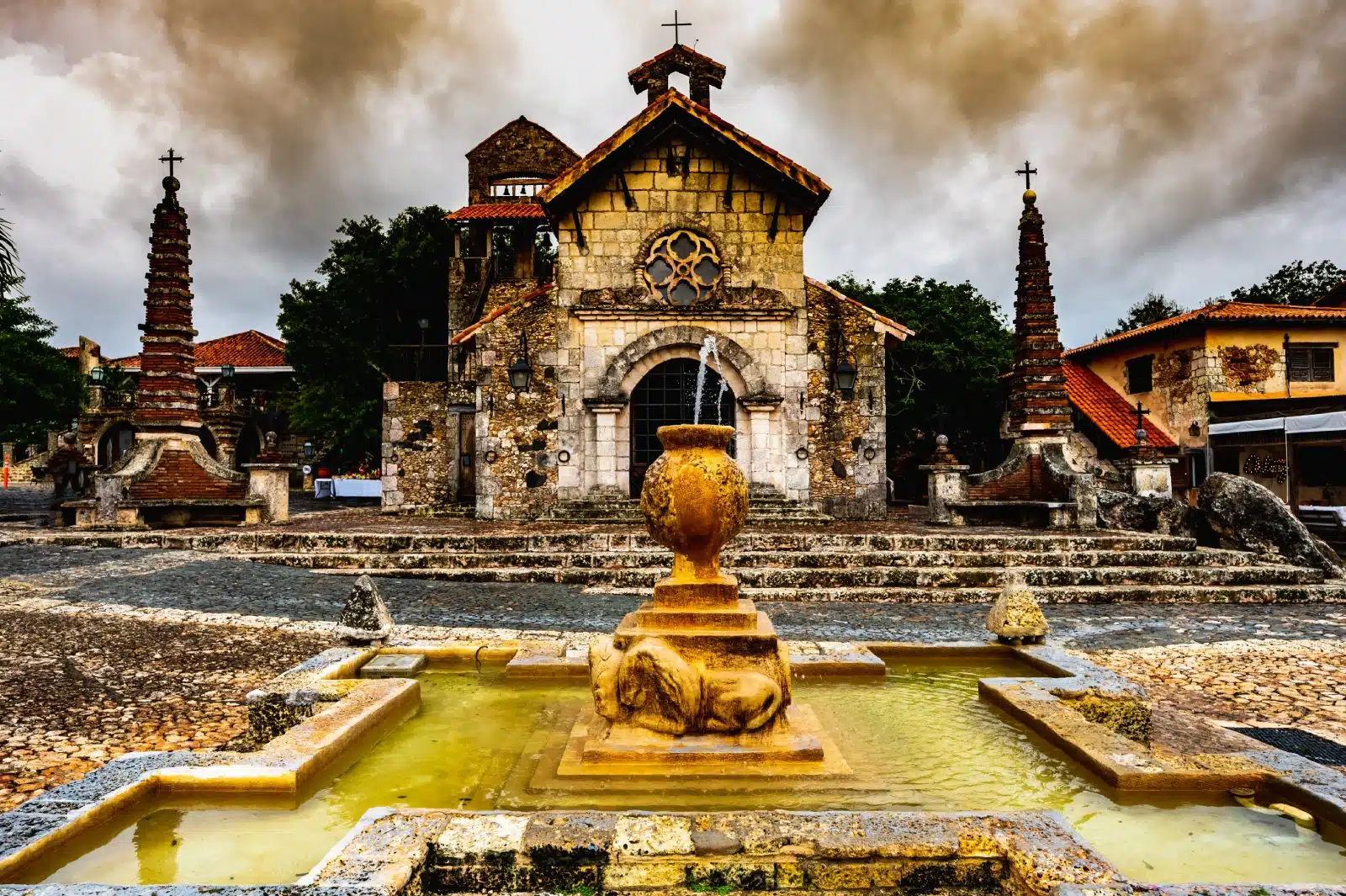
Image Credit: Shutterstock / Dmitry Bruskov
Altos de Chavón in La Romana is a remarkable re-creation of a 16th-century Mediterranean village, offering a unique blend of historical architecture, cultural experiences, and scenic beauty. Perched high above the Chavón River, this architectural marvel features a stunning amphitheater, an archeological museum, and a design school affiliated with Parsons School of Design. Stroll through the cobblestoned streets with art galleries, boutiques, and restaurants, where you can savor fine dining and explore local crafts. The village’s cultural center, hosting art exhibitions and performances, adds to its vibrant atmosphere. Whether attending a concert at the amphitheater, exploring the art studios, or simply enjoying the panoramic views, Altos de Chavón provides a culturally rich and visually stunning experience.
Insider’s Tip
Attend a concert or show at the St. Stanislaus Church or the amphitheater.
When to Travel
November to April for pleasant weather.
How to Get There
La Romana International Airport, with a short drive to Altos de Chavón.
6. Constanza’s Valle Nuevo
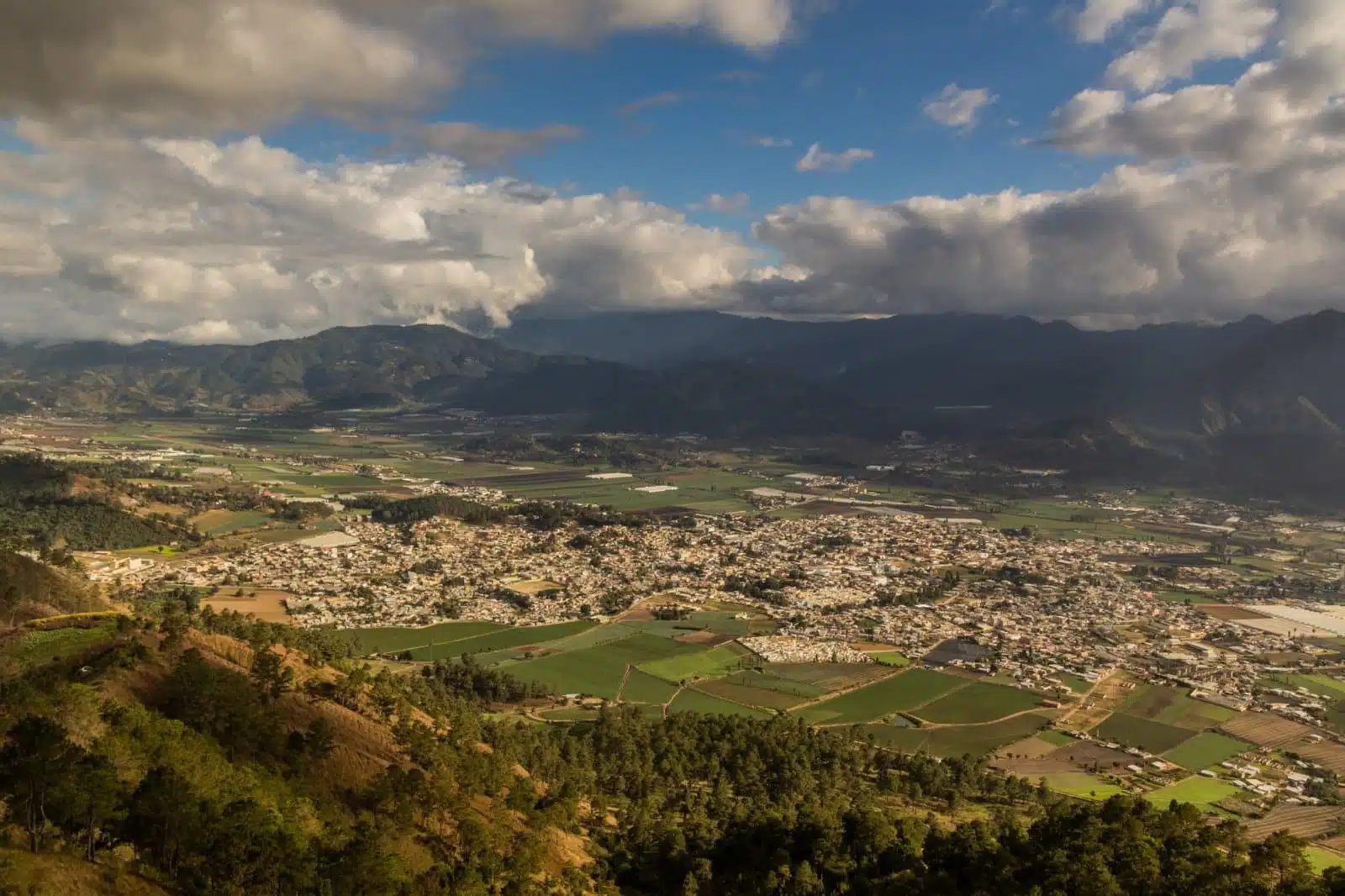
Image Credit: Shutterstock / Matyas Rehak
Valle Nuevo in Constanza, often dubbed the “Dominican Switzerland,” offers a distinct and refreshing experience within the Caribbean context. This high-altitude destination is renowned for its cool climate, alpine landscapes, and diverse flora and fauna. The area is a haven for outdoor enthusiasts, with opportunities for hiking, bird watching, and exploring the scientific reserve of Ébano Verde. Valle Nuevo’s natural beauty is exemplified by its pine forests, rolling hills, and unique ecosystems, offering a serene escape from the tropical heat. The region is also a center for agriculture, with local farms producing a variety of fresh produce. Valle Nuevo presents a serene and picturesque destination for travelers seeking tranquility and a connection with nature.
Insider’s Tip
Bring warm clothing, as temperatures can be surprisingly cool.
When to Travel
April to June for mild weather and blooming flowers.
How to Get There
Fly to Cibao International Airport and drive or take a bus to Constanza.
7. Bayahibe’s Scuba Diving
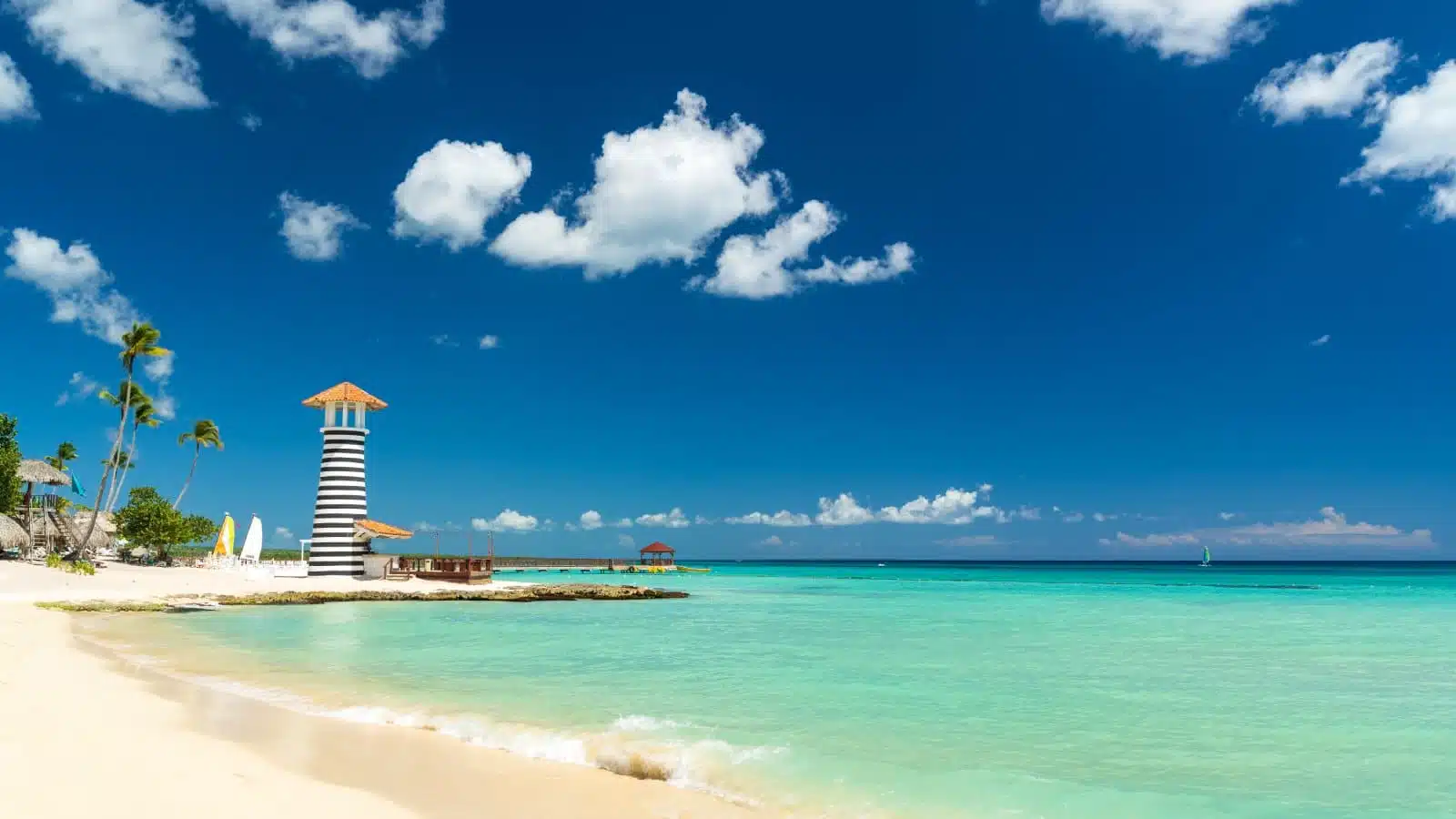
Image Credit: Shutterstock / MJGEH
Bayahibe, a charming fishing village, is recognized as one of the premier scuba diving destinations in the Dominican Republic. The area boasts many dive sites, including the renowned St. George wreck and the pristine waters of Catalina Island, teeming with vibrant marine life and colorful coral reefs. The town itself, with its beautiful beaches and relaxed atmosphere, is a perfect base for divers and beachgoers. Bayahibe’s diving schools offer courses for all levels, from beginners to advanced divers, making it accessible for everyone to explore the underwater wonders. Whether you are an experienced diver or looking to try scuba diving for the first time, Bayahibe provides an ideal setting with its clear waters, diverse marine ecosystems, and friendly local community.
Insider’s Tip
Take a PADI-certified diving course if you’re new to scuba diving.
When to Travel
May to September for optimal diving conditions.
How to Get There
La Romana International Airport is nearby, with local transportation to Bayahibe available.
8. Barahona’s Natural Beauty
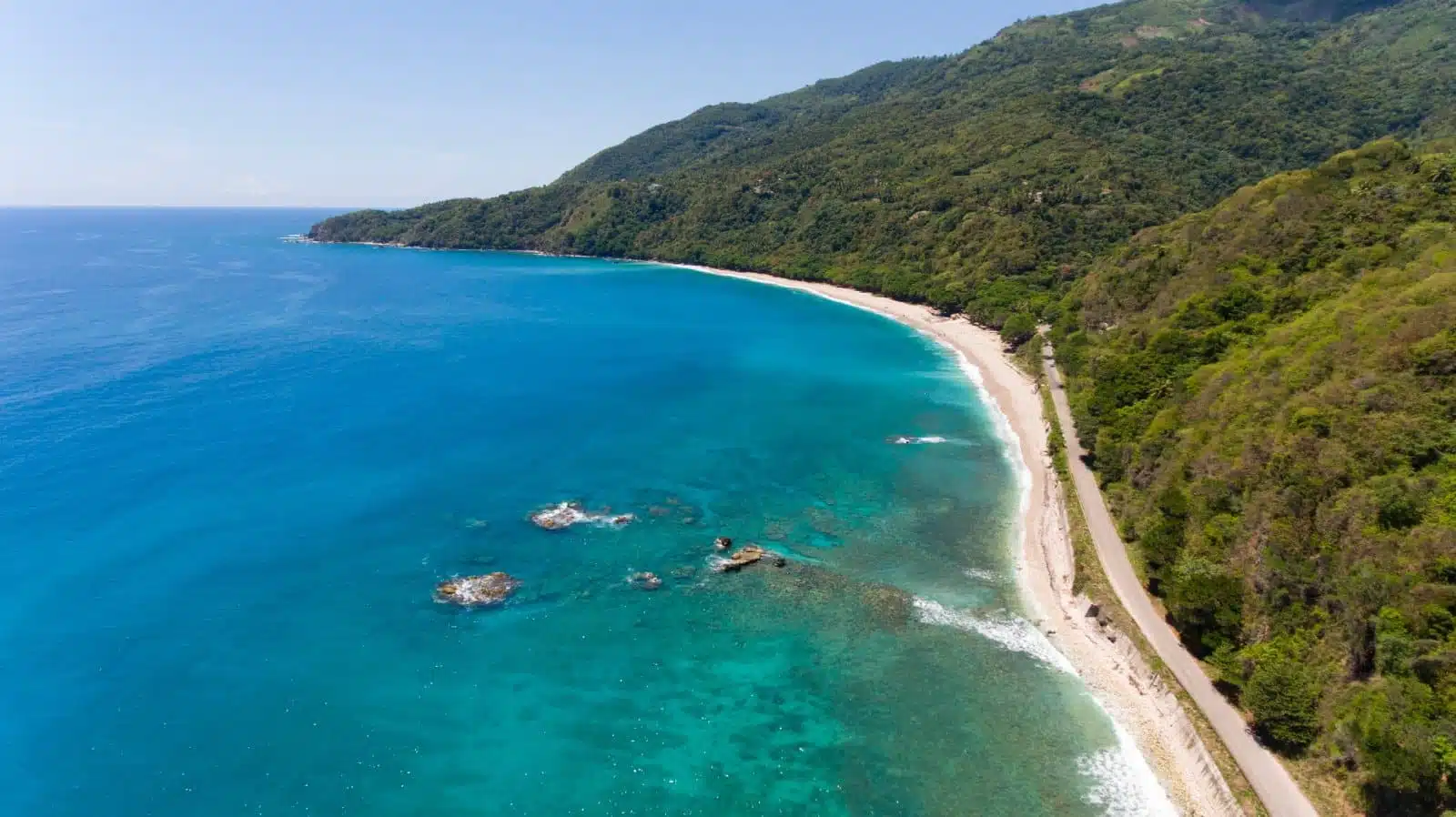
Image Credit: Shutterstock / Kamal Garcia Jorge
The region of Barahona, located in the southwest of the Dominican Republic, is a hidden gem known for its unspoiled natural beauty and ecological diversity. This less-traveled area features pristine beaches, the breathtaking Sierra de Bahoruco National Park, and Lake Enriquillo, where you can spot crocodiles and flamingos in their natural habitat. The region is also home to the Larimar mines, the only source of the rare blue pectolite known as Larimar. Barahona’s unique geological formations and rich biodiversity make it an ideal destination for eco-tourists and nature lovers seeking an authentic and untouched Caribbean experience. The area’s natural hot springs, such as those at Canoa, offer a relaxing and rejuvenating escape, further enhancing the allure of Barahona’s natural beauty.
Insider’s Tip
Visit the natural hot springs at Canoa for a relaxing experience.
When to Travel
December to April for the dry season.
How to Get There
Fly to Las Américas International Airport and drive or take a bus to Barahona.
9. Monte Cristi’s Unspoiled Coast
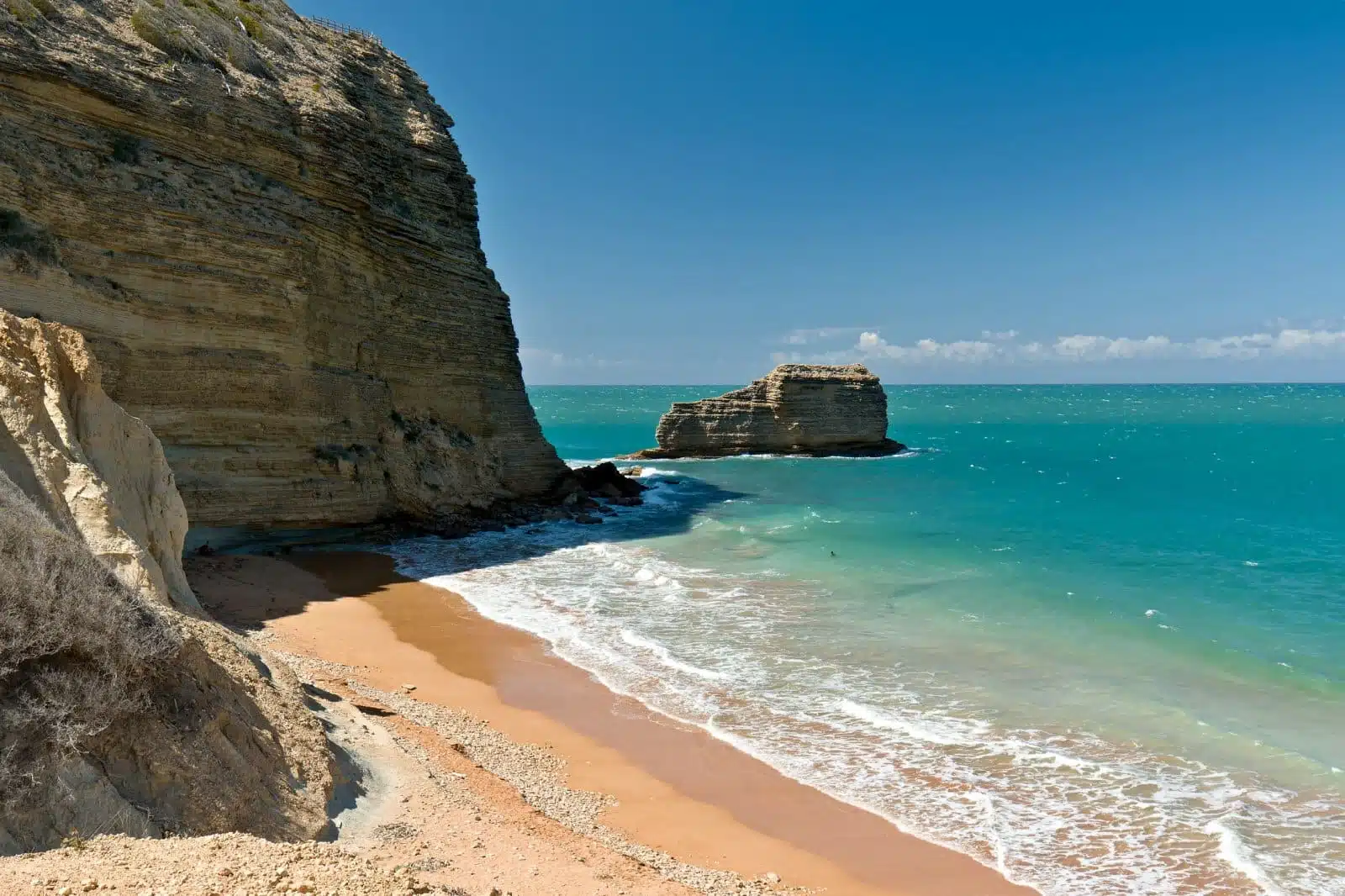
Image Credit: Shutterstock / Rostasedlacek
Located in the northwest of the Dominican Republic, Monte Cristi offers a coastal experience marked by its unspoiled natural beauty and historical significance. The town is characterized by its impressive El Morro. This striking limestone cliff dominates the landscape and provides stunning sea views. The Monte Cristi National Park, encompassing mangroves, lagoons, and diverse birdlife, is a paradise for nature enthusiasts and birdwatchers. The area’s rich history is also evident in its underwater treasures, including the historic shipwreck El Vapor, which lies in shallow waters near Playa El Morro. Monte Cristi’s pristine beaches and its natural and historical attractions make it an ideal destination for those seeking a tranquil and enriching coastal experience away from the typical tourist paths.
Insider’s Tip
Explore the historic shipwreck of El Vapor in the shallow waters near Playa El Morro.
When to Travel
February to May for the best weather and wildlife viewing.
How to Get There
Fly into Cibao International Airport and drive or take public transportation to Monte Cristi.
10. Bonao’s Art Scene
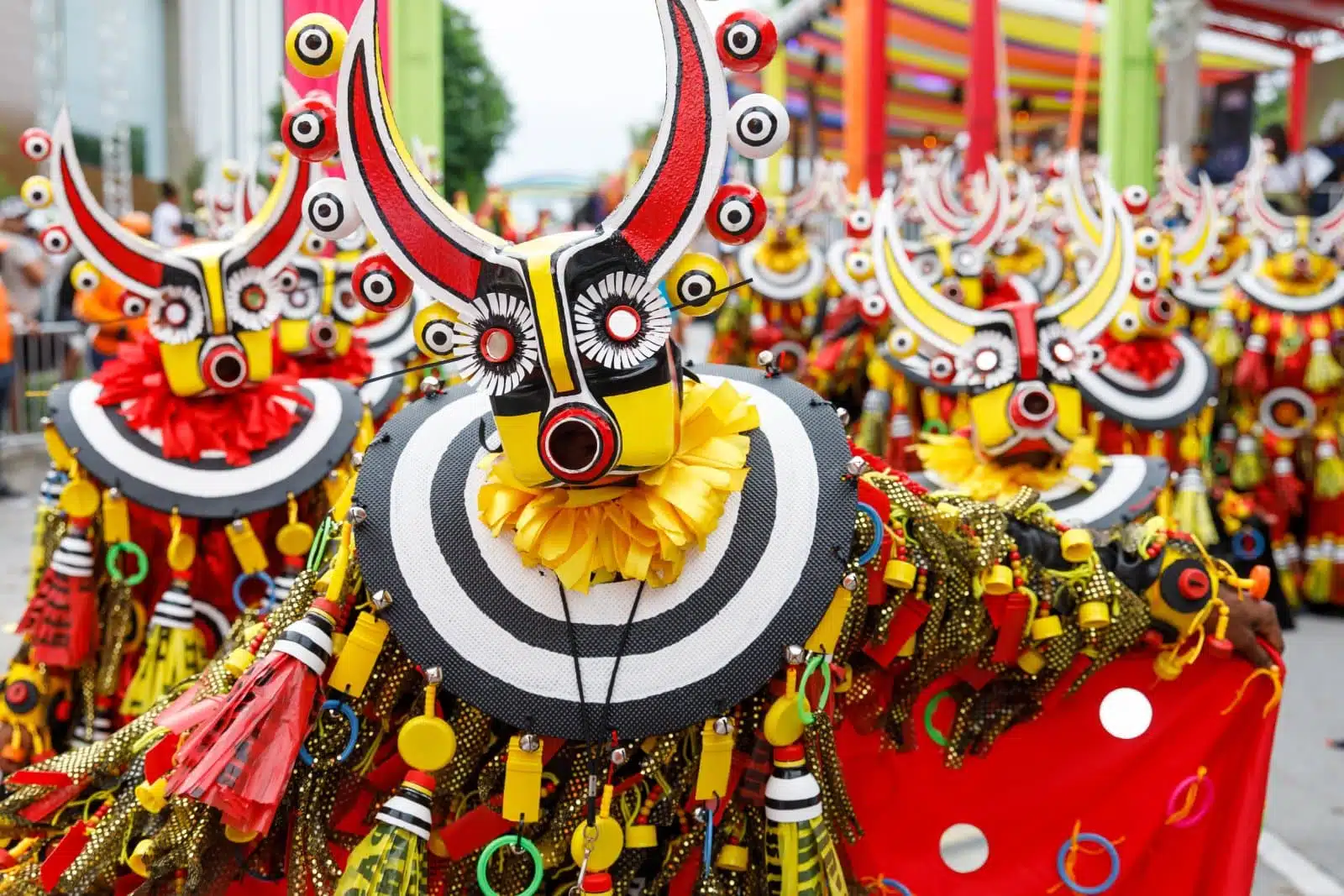
Image Credit: Shutterstock / Aleksandr Rybalko
Bonao, situated in the central region of the Dominican Republic, is a vibrant town celebrated for its dynamic art scene and cultural vibrancy. The town is a hub for local artists, offering a glimpse into the Dominican Republic’s contemporary art movement. The Cándido Bidó Museum, dedicated to one of the country’s most renowned artists, showcases a collection of works that reflect the region’s rich cultural heritage and artistic innovation. Bonao’s art scene is complemented by its lively cultural festivals, particularly the annual Carnival, a kaleidoscope of color, music, and dance. The surrounding area, with its picturesque rivers and waterfalls, provides a scenic backdrop for exploration and inspiration. Bonao offers an authentic and immersive experience for travelers interested in the Dominican Republic’s arts and culture.
Insider’s Tip
Attend the annual Carnival in February for a lively and colorful experience.
When to Travel
February for the Carnival and pleasant weather.
How to Get There
Fly to Las Américas International Airport and drive or take a bus to Bonao.
11. Cabarete’s Windsurfing and Kitesurfing
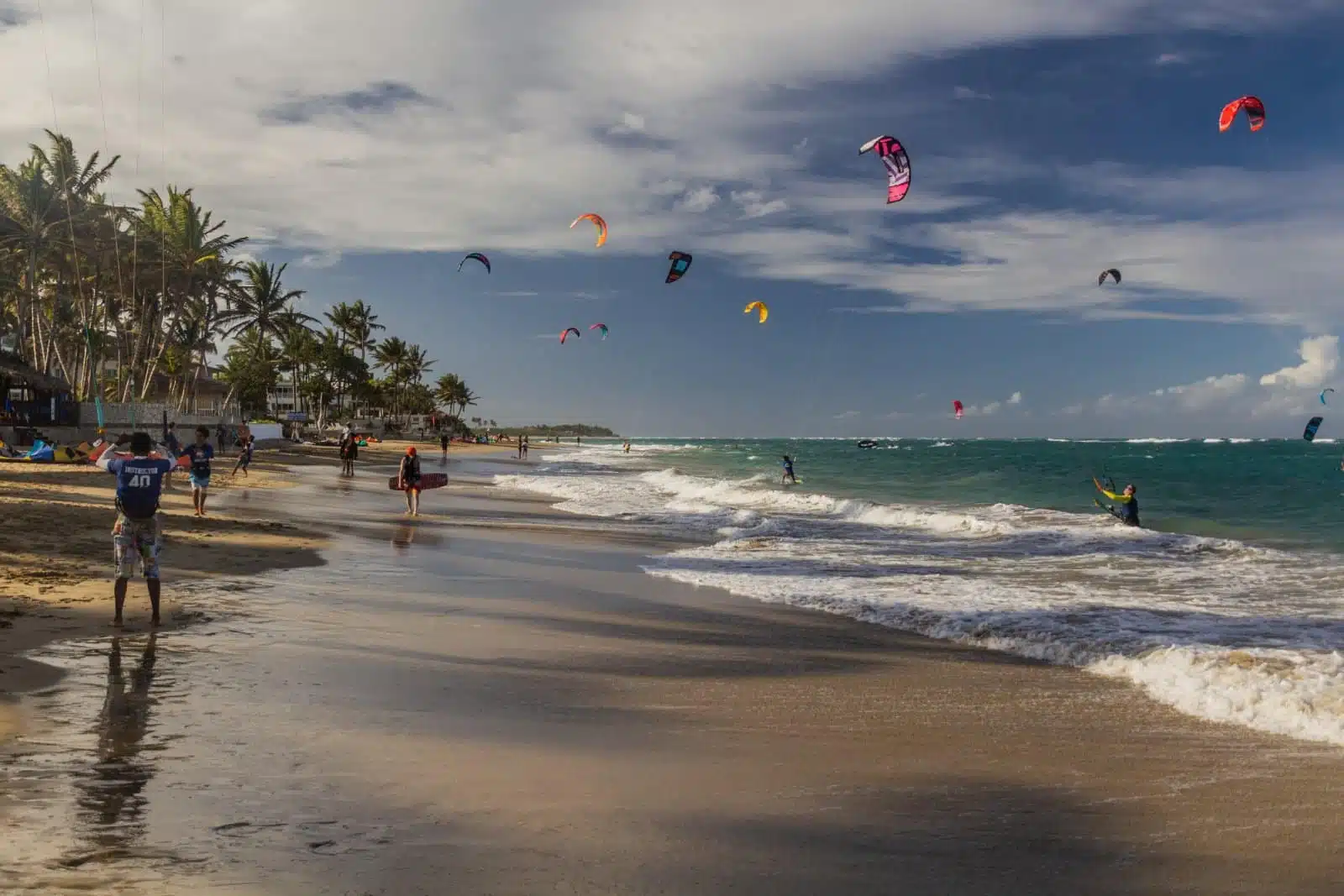
Image Credit: Shutterstock / Matyas Rehak
Cabarete, on the north coast of the Dominican Republic, is a world-renowned destination for windsurfing and kitesurfing, attracting enthusiasts from across the globe. The town’s vibrant atmosphere is enhanced by its beautiful beaches, where the consistent winds create ideal conditions for water sports. Cabarete’s variety of dining and nightlife options complement the town’s adventurous spirit, offering relaxation and entertainment after a day on the water. The town is a haven for water sports and a community that celebrates the active and outdoor lifestyle, with opportunities for beach volleyball, yoga, and other activities. Whether you’re a seasoned kitesurfer or eager to learn, Cabarete provides the perfect setting with its welcoming community, excellent facilities, and stunning natural beauty.
Insider’s Tip
Take lessons at a local kitesurfing school if you’re a beginner.
When to Travel
June to August for the best windsurfing and kitesurfing conditions.
How to Get There
Puerto Plata International Airport is the closest, with a short drive to Cabarete.
12. Cabrera’s Tranquility
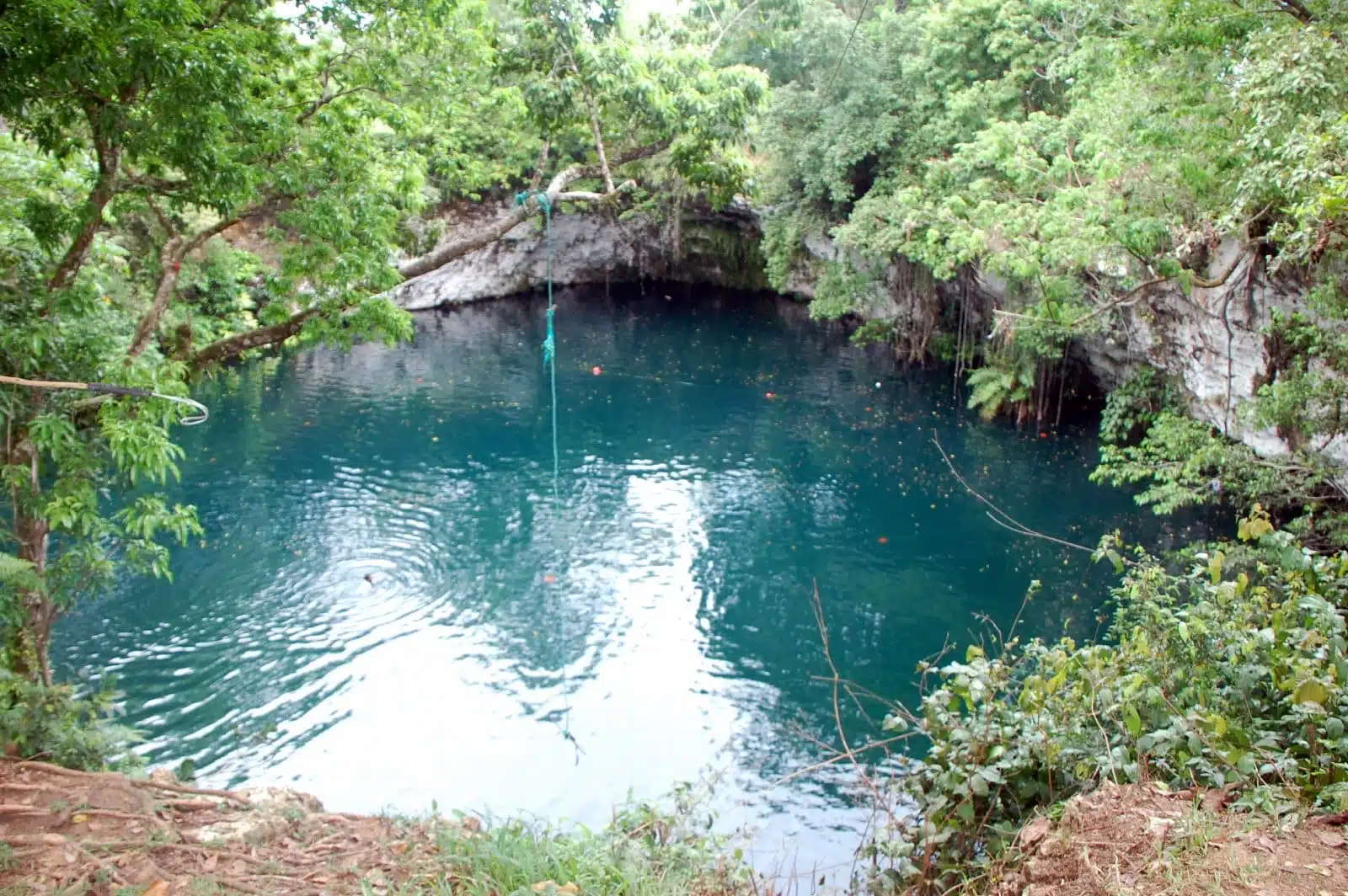
Image Credit: Shutterstock / Tpena
Cabrera, on the Dominican Republic’s serene north coast, offers a tranquil escape from the more frequented tourist destinations. Known for its natural beauty, including the famous Blue Lagoon, Cabrera is a haven for those seeking peace and an authentic connection with nature. The town’s landscape combines stunning beaches, lush countryside, and charming local life. Here, you can immerse yourself in the quiet of pristine beaches or explore natural wonders like the Dudu Lagoon, a hidden gem with crystal-clear waters perfect for swimming. Cabrera’s laid-back atmosphere extends to its small but welcoming community, where you can experience genuine Dominican hospitality and culture.
Insider’s Tip
Visit the nearby Dudu Lagoon for a refreshing swim in crystal-clear waters.
When to Travel
November to March for the best weather.
How to Get There
Fly into Gregorio Luperón International Airport in Puerto Plata and drive to Cabrera.
13. Santiago’s Cultural Richness
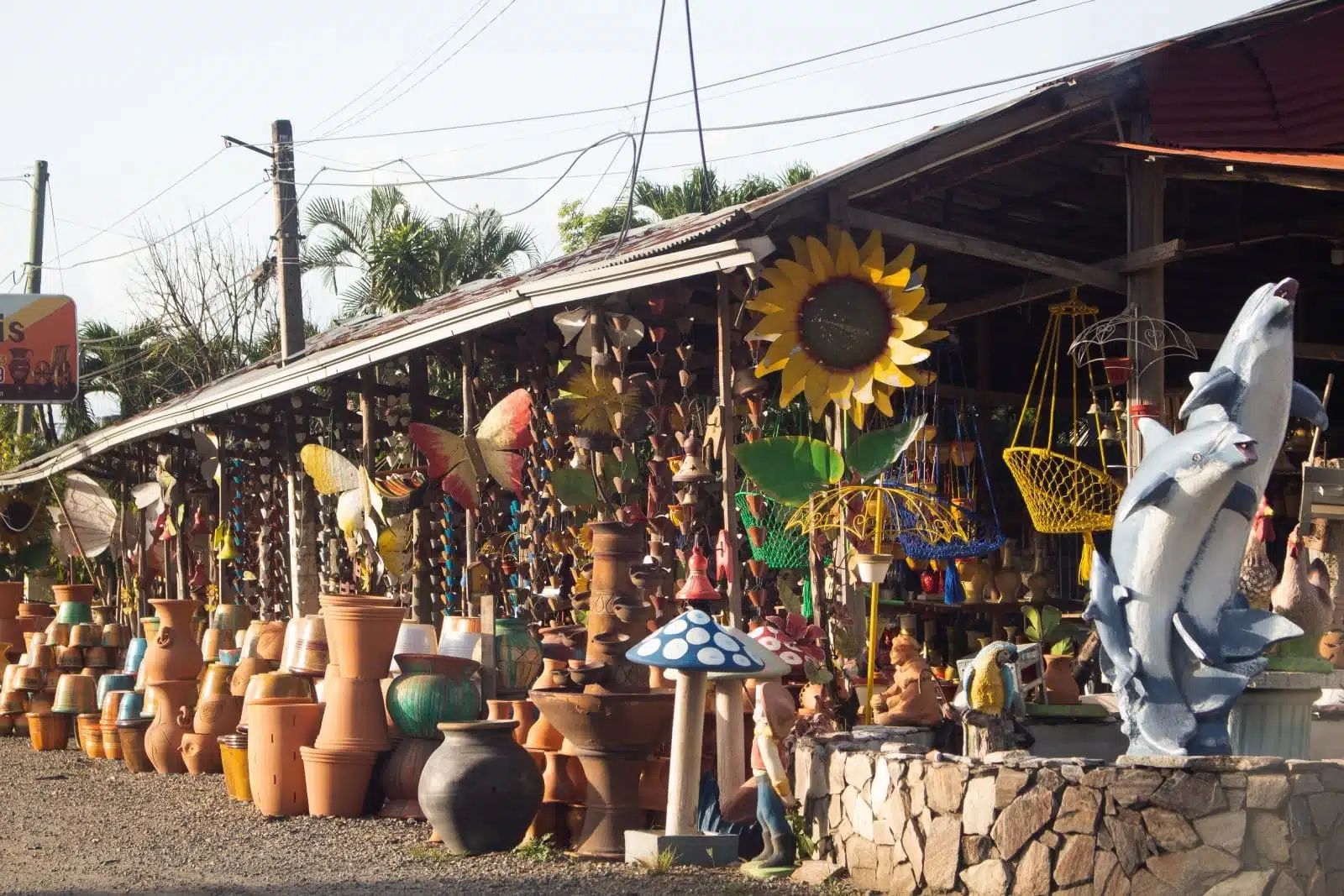
Image Credit: Shutterstock / Paola Paulino
Santiago, the Dominican Republic’s second-largest city, is a vibrant hub of culture and history. As a traveler here, you will discover a city pulsating with the rhythms of merengue and bachata, a rich tapestry of museums, and historical sites that offer a deep dive into the nation’s heritage. The Centro León, in particular, is a cultural cornerstone, showcasing impressive art and cultural exhibitions. With its array of music and dance, Santiago’s energetic nightlife offers a perfect opportunity to experience the local scene. The city’s culinary landscape is equally rich, featuring a mix of traditional Dominican flavors and international cuisine. Santiago is an urban explorer’s delight, blending the bustle of city life with rich cultural experiences.
Insider’s Tip
Experience the local nightlife and live music, especially the merengue and bachata scenes.
When to Travel
December to April for the best urban experience.
How to Get There
Cibao International Airport serves Santiago, with short transportation to the city center.
14. Pedernales’ Uncharted Territories
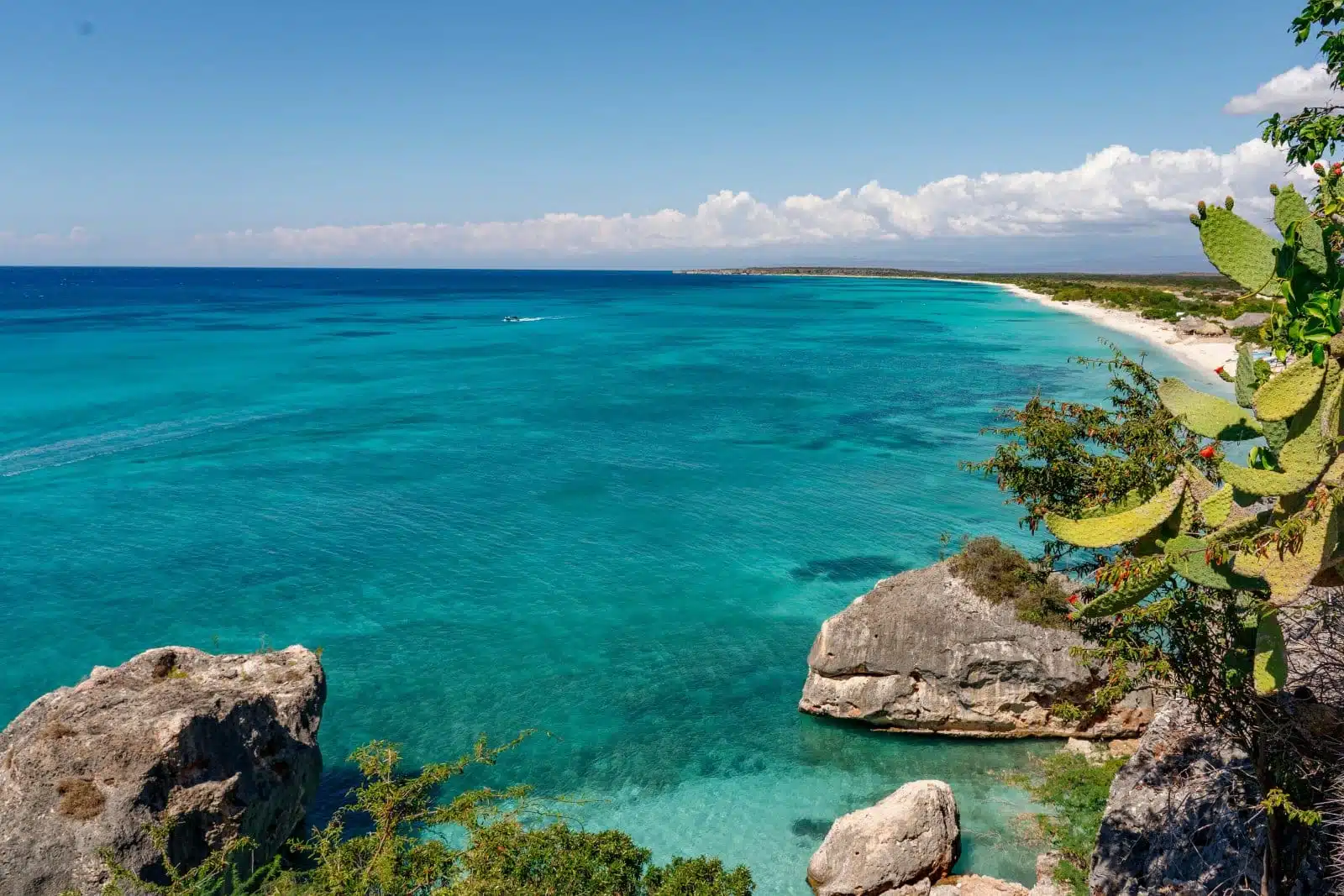
Image Credit: Shutterstock / aleksandr paraev
Pedernales province, in the Dominican Republic’s southwest, is an uncharted territory for many travelers, offering untouched natural beauty and unique eco-tourism experiences. This area is characterized by its pristine beaches, such as the famed Bahía de las Águilas, and the biodiversity of Jaragua National Park. The region is ideal for those passionate about nature and seeking to explore less-traveled paths. The Larimar mines, unique to this area, provide a glimpse into the mining of this rare blue stone. Pedernales’ landscape is a blend of coastal beauty and rugged inland terrains, offering a diverse range of activities for the adventurous traveler, from beach exploration to bird-watching in the national park.
Insider’s Tip
Arrange a boat trip to Bahía de las Águilas from the nearby village of La Cueva.
When to Travel
December to April for dry weather and optimal wildlife viewing.
How to Get There
Fly into Las Américas International Airport and take a domestic flight or drive to Pedernales.
15. Las Terrenas’ European Flair
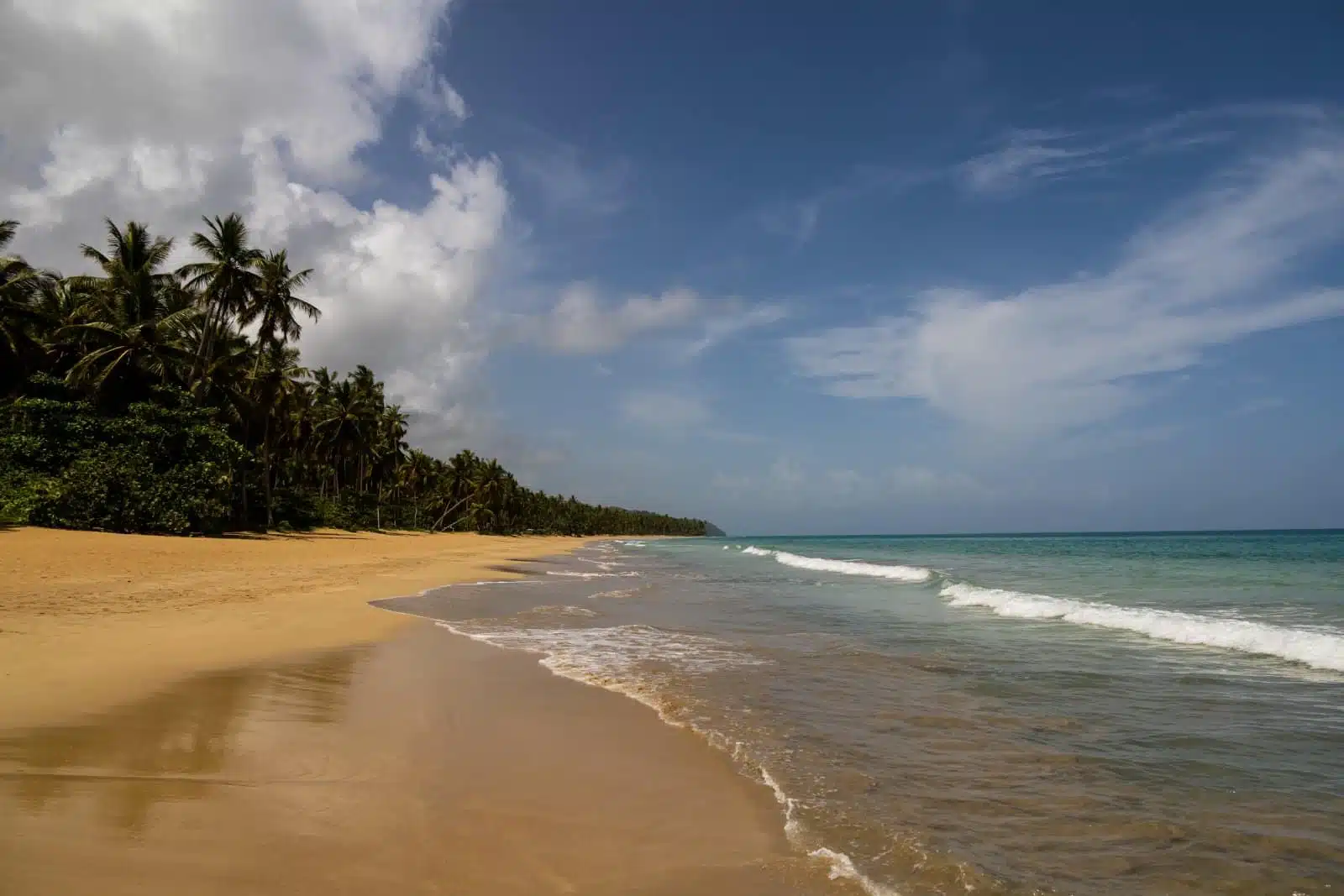
Image Credit: Shutterstock / Wanderlust Media
Las Terrenas in the Samaná Peninsula uniquely blends Caribbean charm with a European flair. This coastal town is known for its beautiful beaches, such as Playa Bonita and Cosón, and its relaxed, cosmopolitan atmosphere. The area’s international cuisine reflects its diverse community, with various dining options ranging from local Dominican fare to international dishes. Las Terrenas also serves as a gateway to the natural wonders of the Samaná region, including whale watching in Samaná Bay. The town’s blend of Caribbean beach life with a touch of European sophistication makes it a distinctive destination for travelers seeking both relaxation and cultural diversity in their Caribbean experience.
Insider’s Tip
Explore the nearby Playa Bonita and Cosón for quieter beach experiences.
When to Travel
January to March, especially for whale watching in Samaná Bay.
How to Get There
El Catey International Airport is the closest, with a short drive to Las Terrenas.
The Bottom Line
Exploring the Dominican Republic offers a diverse and enriching travel experience. Each destination within the country presents a unique aspect of its rich cultural tapestry and stunning natural beauty. From historical sites in Santo Domingo to the pristine beaches of Punta Cana, the Dominican Republic caters to a wide range of interests and preferences. As you plan your journey, consider each location’s distinct character and offerings. This country’s blend of history, culture, and natural splendor, combined with its warm hospitality, makes it an ideal destination for travelers seeking a comprehensive Caribbean experience. In the Dominican Republic, you will discover a land full of stories, landscapes, and moments that enrich your understanding of this vibrant and dynamic country.
More From The Green Voyage
Top 10 Trending Travel Destinations 2024
6 Essential Banking Apps for International Travel – Managing Your Finances on the Go
Traveling With Kids – 10 Tips to Create Memorable Family Holidays
The post Guide to the 15 Best Places to Visit in the Dominican Republic 2024 first appeared on The Green Voyage.
Featured Image Credit: Shutterstock / saaton.
For transparency, this content was partly developed with AI assistance and carefully curated by an experienced editor to be informative and ensure accuracy.
Tips for Trip Success
Book Your Flight
Find an inexpensive flight by using Kayak, a favorite of ours because it regularly returns less expensive flight options from a variety of airlines.
Book Your Hotel or Special Accommodation
We are big fans of Booking.com. We like their review system and photos. If we want to see more reviews and additional booking options, we go to Expedia.
You Need Travel Insurance!
Good travel insurance means having total peace of mind. Travel insurance protects you when your medical insurance often will not and better than what you get from your credit card. It will provide comprehensive coverage should you need medical treatment or return to the United States, compensation for trip interruption, baggage loss, and other situations.Find the Perfect Insurance Plan for Your Trip
